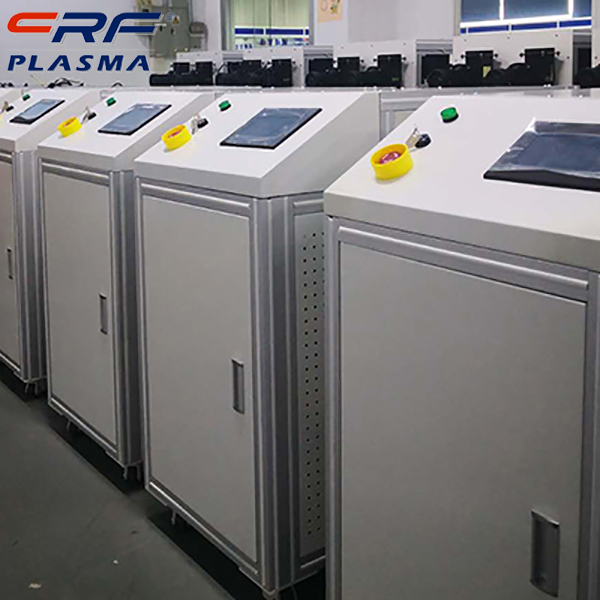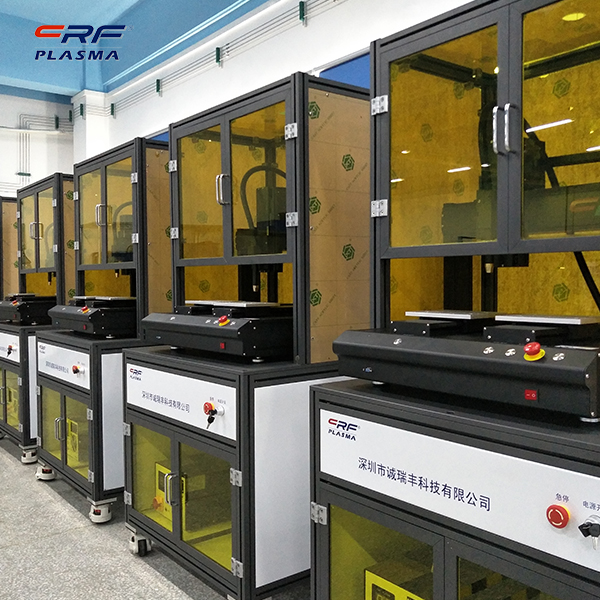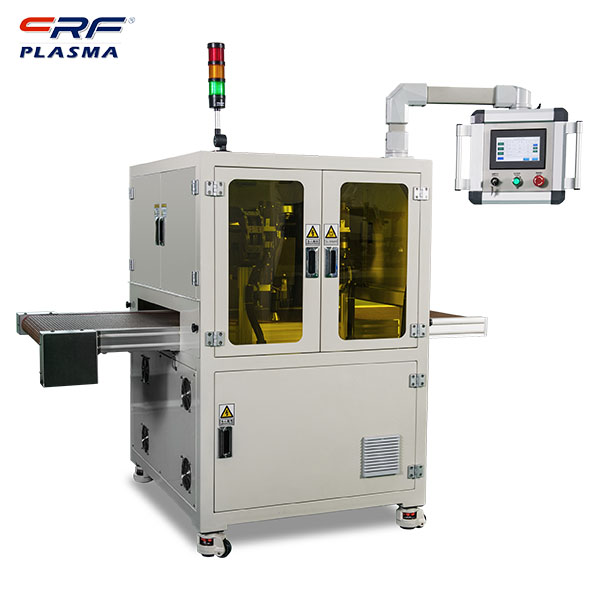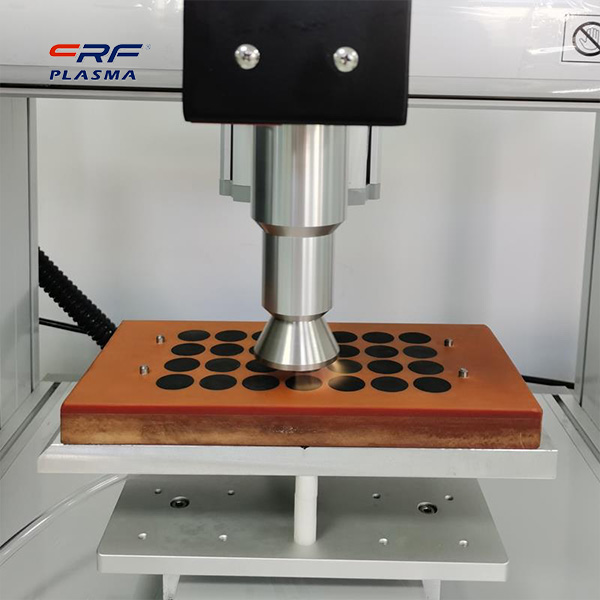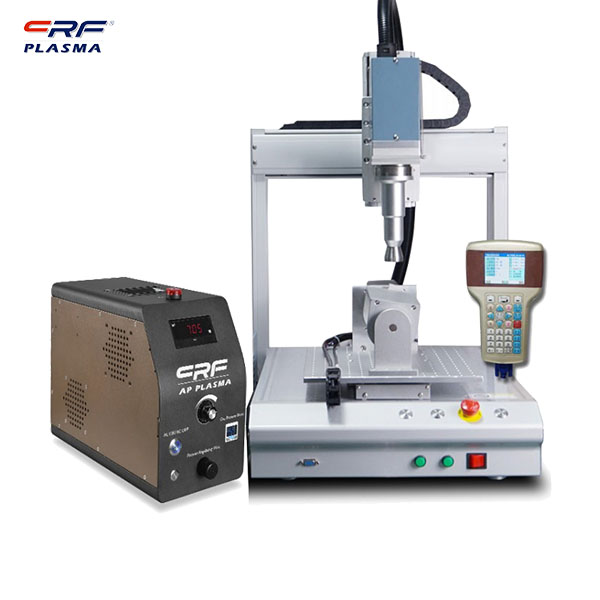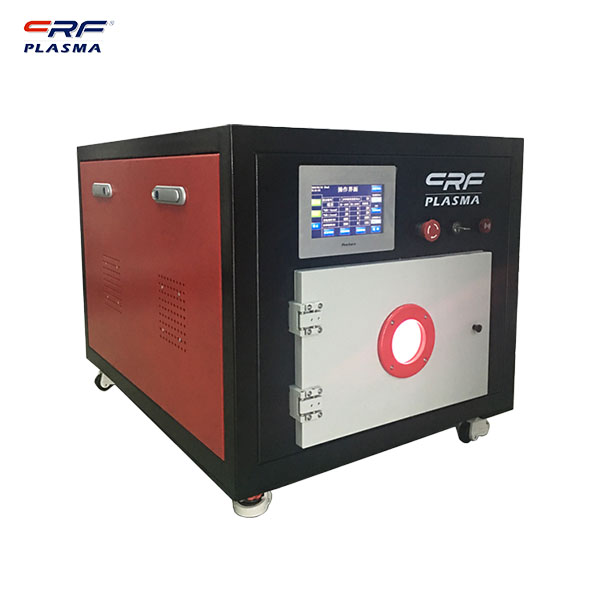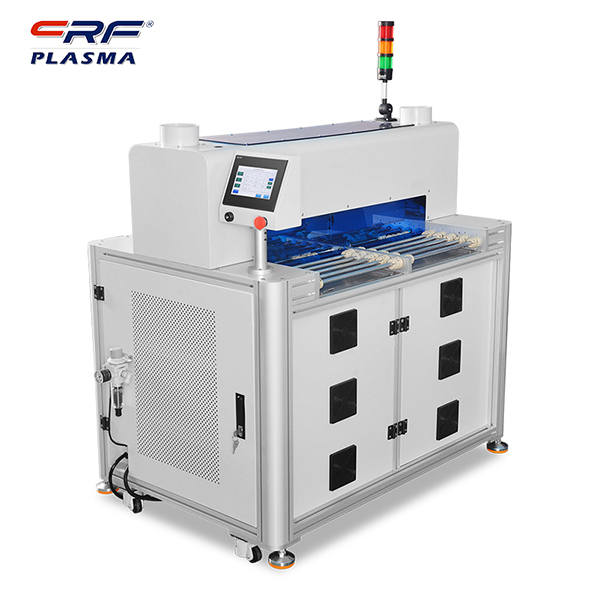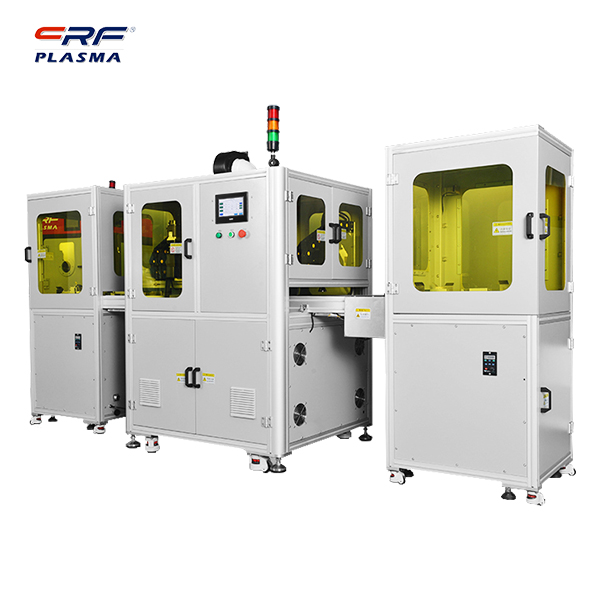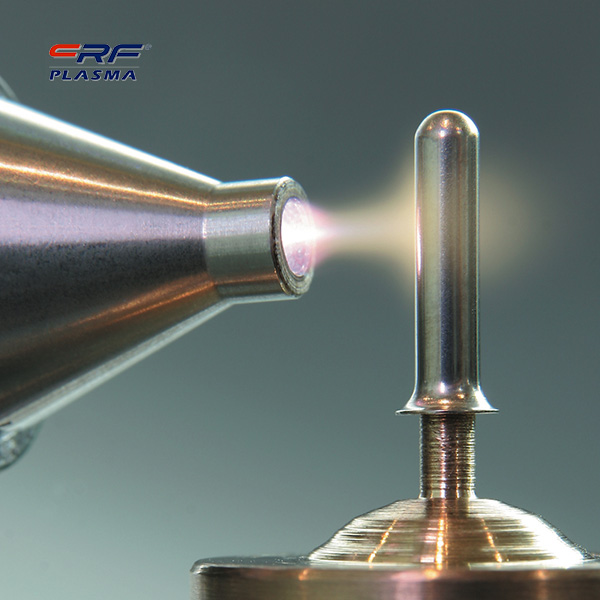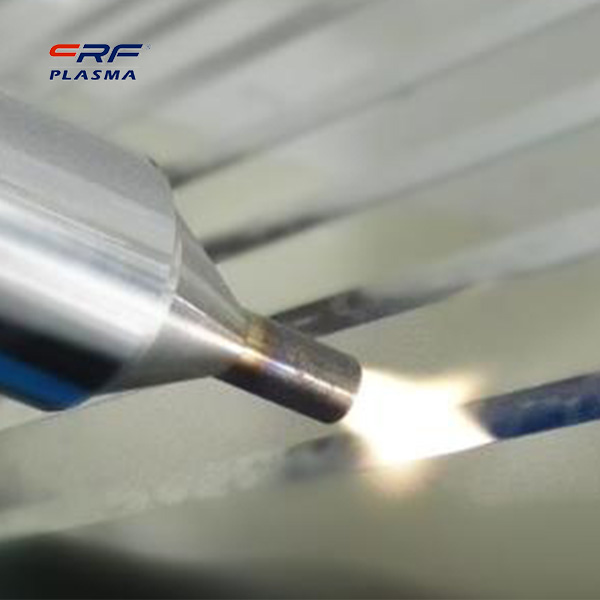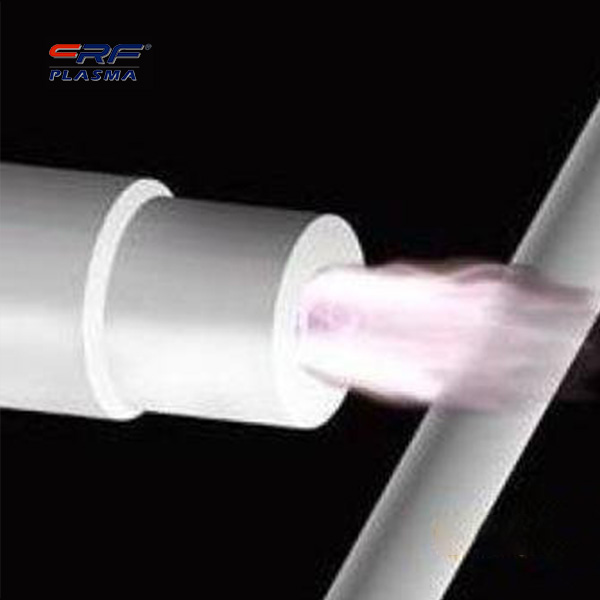
Welcome to Shenzhen Sing Fung Intelligent Manufacturing Co., Ltd.
E-mail:shaobo@sfi-crf.com
Plasma surface treatment machine solves the problem of surface cladding coating cracks and makes the coating widely used
- Categories:Company Dynamics
- Author:Plasma cleaning machine-CRF plasma plasma equipment-plasma surface treatment machine manufacturer-chengfeng intelligent manufacturing
- Origin:
- Time of issue:2021-12-15
- Views:
(Summary description)Plasma surface treatment machine solves the problem of surface cladding coating cracks and makes the coating widely used: Compared with laser cladding technology, plasma technology of plasma surface treatment machine has the characteristics of high energy conversion efficiency, small equipment investment and simple operation and maintenance. It has achieved unprecedented development in recent years. The use of plasma technology has achieved similar laser cladding coating. The flame spraying composite powder and plasma are prepared by the carbonization composite technology of the drive body. Carbon is not only a reactive component, but also a binder in the composite powder. Each plasma forms an agglomerated structure in which fine raw powder particles are coated and bonded by carbon. . The carbon formed after the carbonization of organic matter has a strong adsorption effect, which can bind the raw material powder together so that the plasma has a high bonding strength during powder feeding. The density of the carbonized composite powder particles is almost the same, and the particle size and fluidity are also basically the same. It is expected to solve the key problem of consistent powder fluidity in plasma technology. The problem of surface cladding coating cracks has always been a bottleneck restricting the wide application of coatings. At present, a reasonable design of coating composition is an effective coating diameter to solve the problem of coating cracks. The characteristics of precursor carbonization composite technology and plasma technology. Through the design and research of plasma cladding coating reaction alloy components, high-quality anti-crack plasma coatings are prepared. The microstructure of TiC-reinforced high-chromium iron-based (Fe- -Cr-C-Ti) coating is a large number of gray-black granular and dendritic phases distributed on the substrate. The coating is composed of austenite (A) and a total of Crystal phase (Cr, Fe), C3 (B) and in-situ; synthesized TiC phase (C) composition. The volume fraction of TiC particles near the fusion zone of the coating is small, and the volume fraction of TiC particles in the middle of the coating is slightly larger. The volume fraction of TiC particles on the coating surface is larger. The shape of TiC particles in the fusion zone and the middle area of the coating is mostly equiaxed particles, while some of the particles in the surface area of the coating are dendrites. This is due to the heat transfer in the molten pool and the local unevenness of Ti and C concentrations, which are easy to grow on TiC. The front forming component is too cold and the exothermic effect of the TiC in-situ synthesis reaction makes Ti and C atoms rapidly diffuse and nucleate to the front end, forming more dendritic TiC particles. In addition, because the density of TiC particles is smaller than that of Fe-Cr melt, they tend to float and aggregate under the stirring of the molten pool. Therefore, if they are close, there are more TiC particles on the surface area of the coating; and there are fewer TiC particles in the bottom area of the coating. . The rapid heating and rapid cooling in the plasma treatment process of the plasma surface treatment machine lead to large thermal stress in the coating, which leads to cracking of the coating. The surface of the Fe-Cr-C-Ti coating is somewhat rough, but there are no cracks. This is because Ti is added to the carbonized composite component of the Fe-Cr-C coating, and Ti+C<→TiC reaction occurs to synthesize TiC particles in situ. The formation temperature of TiC is higher than the precipitation temperature of primary carbides. Then, these dispersed TiC particles may be used as a heterogeneous nucleation substrate of primary carbides to refine or eliminate chromium primary carbides. C3 primary carbides are improved (Cr, Fe), C3 eutectic structure increases a lot of austenite structure, austenite has excellent strength and toughness at high temperature and normal temperature, which can provide a strong wear-resistant reinforcing phase of the coating Support to reduce the cracking and peeling tendency of coated parts during service. Therefore, the synthesis of a large number of TiC particles and the formation of austenite structure, the reduction or elimination of (Cr Fe) and C3 primary carbides, the improvement of (Cr, Fe) and C3 eutectic structure, effectively improve the toughness of the coating. The generation of coating cracks. Generally speaking, the amount of wear when a part is rubbed is related to the contact stress, relative speed, lubrication condition and the material of the friction pair; and the wear resistance of the material is related to the hardness and microstructure of the material. Therefore, plasma surface treatment machine to improve the surface hardness of the coating is an important way to improve the performance of materials.
Plasma surface treatment machine solves the problem of surface cladding coating cracks and makes the coating widely used
(Summary description)Plasma surface treatment machine solves the problem of surface cladding coating cracks and makes the coating widely used:
Compared with laser cladding technology, plasma technology of plasma surface treatment machine has the characteristics of high energy conversion efficiency, small equipment investment and simple operation and maintenance. It has achieved unprecedented development in recent years. The use of plasma technology has achieved similar laser cladding coating.
The flame spraying composite powder and plasma are prepared by the carbonization composite technology of the drive body. Carbon is not only a reactive component, but also a binder in the composite powder. Each plasma forms an agglomerated structure in which fine raw powder particles are coated and bonded by carbon. . The carbon formed after the carbonization of organic matter has a strong adsorption effect, which can bind the raw material powder together so that the plasma has a high bonding strength during powder feeding.
The density of the carbonized composite powder particles is almost the same, and the particle size and fluidity are also basically the same. It is expected to solve the key problem of consistent powder fluidity in plasma technology. The problem of surface cladding coating cracks has always been a bottleneck restricting the wide application of coatings. At present, a reasonable design of coating composition is an effective coating diameter to solve the problem of coating cracks. The characteristics of precursor carbonization composite technology and plasma technology. Through the design and research of plasma cladding coating reaction alloy components, high-quality anti-crack plasma coatings are prepared.
The microstructure of TiC-reinforced high-chromium iron-based (Fe- -Cr-C-Ti) coating is a large number of gray-black granular and dendritic phases distributed on the substrate. The coating is composed of austenite (A) and a total of Crystal phase (Cr, Fe), C3 (B) and in-situ; synthesized TiC phase (C) composition. The volume fraction of TiC particles near the fusion zone of the coating is small, and the volume fraction of TiC particles in the middle of the coating is slightly larger. The volume fraction of TiC particles on the coating surface is larger. The shape of TiC particles in the fusion zone and the middle area of the coating is mostly equiaxed particles, while some of the particles in the surface area of the coating are dendrites. This is due to the heat transfer in the molten pool and the local unevenness of Ti and C concentrations, which are easy to grow on TiC. The front forming component is too cold and the exothermic effect of the TiC in-situ synthesis reaction makes Ti and C atoms rapidly diffuse and nucleate to the front end, forming more dendritic TiC particles.
In addition, because the density of TiC particles is smaller than that of Fe-Cr melt, they tend to float and aggregate under the stirring of the molten pool. Therefore, if they are close, there are more TiC particles on the surface area of the coating; and there are fewer TiC particles in the bottom area of the coating. . The rapid heating and rapid cooling in the plasma treatment process of the plasma surface treatment machine lead to large thermal stress in the coating, which leads to cracking of the coating. The surface of the Fe-Cr-C-Ti coating is somewhat rough, but there are no cracks. This is because Ti is added to the carbonized composite component of the Fe-Cr-C coating, and Ti+C<→TiC reaction occurs to synthesize TiC particles in situ.
The formation temperature of TiC is higher than the precipitation temperature of primary carbides. Then, these dispersed TiC particles may be used as a heterogeneous nucleation substrate of primary carbides to refine or eliminate chromium primary carbides. C3 primary carbides are improved (Cr, Fe), C3 eutectic structure increases a lot of austenite structure, austenite has excellent strength and toughness at high temperature and normal temperature, which can provide a strong wear-resistant reinforcing phase of the coating Support to reduce the cracking and peeling tendency of coated parts during service.
Therefore, the synthesis of a large number of TiC particles and the formation of austenite structure, the reduction or elimination of (Cr Fe) and C3 primary carbides, the improvement of (Cr, Fe) and C3 eutectic structure, effectively improve the toughness of the coating. The generation of coating cracks. Generally speaking, the amount of wear when a part is rubbed is related to the contact stress, relative speed, lubrication condition and the material of the friction pair; and the wear resistance of the material is related to the hardness and microstructure of the material. Therefore, plasma surface treatment machine to improve the surface hardness of the coating is an important way to improve the performance of materials.
- Categories:Company Dynamics
- Author:Plasma cleaning machine-CRF plasma plasma equipment-plasma surface treatment machine manufacturer-chengfeng intelligent manufacturing
- Origin:
- Time of issue:2021-12-15 21:51
- Views:
Plasma surface treatment machine solves the problem of surface cladding coating cracks and makes the coating widely used:
Compared with laser cladding technology, plasma technology of plasma surface treatment machine has the characteristics of high energy conversion efficiency, small equipment investment and simple operation and maintenance. It has achieved unprecedented development in recent years. The use of plasma technology has achieved similar laser cladding coating.
 The flame spraying composite powder and plasma are prepared by the carbonization composite technology of the drive body. Carbon is not only a reactive component, but also a binder in the composite powder. Each plasma forms an agglomerated structure in which fine raw powder particles are coated and bonded by carbon. . The carbon formed after the carbonization of organic matter has a strong adsorption effect, which can bind the raw material powder together so that the plasma has a high bonding strength during powder feeding.
The flame spraying composite powder and plasma are prepared by the carbonization composite technology of the drive body. Carbon is not only a reactive component, but also a binder in the composite powder. Each plasma forms an agglomerated structure in which fine raw powder particles are coated and bonded by carbon. . The carbon formed after the carbonization of organic matter has a strong adsorption effect, which can bind the raw material powder together so that the plasma has a high bonding strength during powder feeding.
The density of the carbonized composite powder particles is almost the same, and the particle size and fluidity are also basically the same. It is expected to solve the key problem of consistent powder fluidity in plasma technology. The problem of surface cladding coating cracks has always been a bottleneck restricting the wide application of coatings. At present, a reasonable design of coating composition is an effective coating diameter to solve the problem of coating cracks. The characteristics of precursor carbonization composite technology and plasma technology. Through the design and research of plasma cladding coating reaction alloy components, high-quality anti-crack plasma coatings are prepared.
The microstructure of TiC-reinforced high-chromium iron-based (Fe- -Cr-C-Ti) coating is a large number of gray-black granular and dendritic phases distributed on the substrate. The coating is composed of austenite (A) and a total of Crystal phase (Cr, Fe), C3 (B) and in-situ; synthesized TiC phase (C) composition. The volume fraction of TiC particles near the fusion zone of the coating is small, and the volume fraction of TiC particles in the middle of the coating is slightly larger. The volume fraction of TiC particles on the coating surface is larger. The shape of TiC particles in the fusion zone and the middle area of the coating is mostly equiaxed particles, while some of the particles in the surface area of the coating are dendrites. This is due to the heat transfer in the molten pool and the local unevenness of Ti and C concentrations, which are easy to grow on TiC. The front forming component is too cold and the exothermic effect of the TiC in-situ synthesis reaction makes Ti and C atoms rapidly diffuse and nucleate to the front end, forming more dendritic TiC particles.
In addition, because the density of TiC particles is smaller than that of Fe-Cr melt, they tend to float and aggregate under the stirring of the molten pool. Therefore, if they are close, there are more TiC particles on the surface area of the coating; and there are fewer TiC particles in the bottom area of the coating. . The rapid heating and rapid cooling in the plasma treatment process of the plasma surface treatment machine lead to large thermal stress in the coating, which leads to cracking of the coating. The surface of the Fe-Cr-C-Ti coating is somewhat rough, but there are no cracks. This is because Ti is added to the carbonized composite component of the Fe-Cr-C coating, and Ti+C<→TiC reaction occurs to synthesize TiC particles in situ.
The formation temperature of TiC is higher than the precipitation temperature of primary carbides. Then, these dispersed TiC particles may be used as a heterogeneous nucleation substrate of primary carbides to refine or eliminate chromium primary carbides. C3 primary carbides are improved (Cr, Fe), C3 eutectic structure increases a lot of austenite structure, austenite has excellent strength and toughness at high temperature and normal temperature, which can provide a strong wear-resistant reinforcing phase of the coating Support to reduce the cracking and peeling tendency of coated parts during service.
Therefore, the synthesis of a large number of TiC particles and the formation of austenite structure, the reduction or elimination of (Cr Fe) and C3 primary carbides, the improvement of (Cr, Fe) and C3 eutectic structure, effectively improve the toughness of the coating. The generation of coating cracks. Generally speaking, the amount of wear when a part is rubbed is related to the contact stress, relative speed, lubrication condition and the material of the friction pair; and the wear resistance of the material is related to the hardness and microstructure of the material. Therefore, plasma surface treatment machine to improve the surface hardness of the coating is an important way to improve the performance of materials.
Scan the QR code to read on your phone

TEL:0755-3367 3020 / 0755-3367 3019

E-mail:sales-sfi@sfi-crf.com

ADD:Mabao Industrial Zone, Huangpu, Baoan District, Shenzhen




